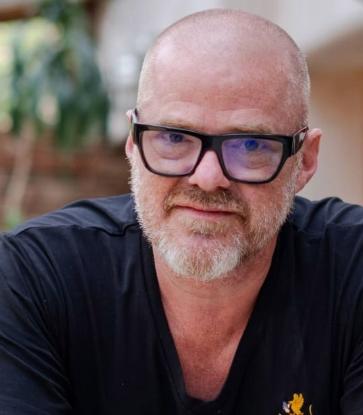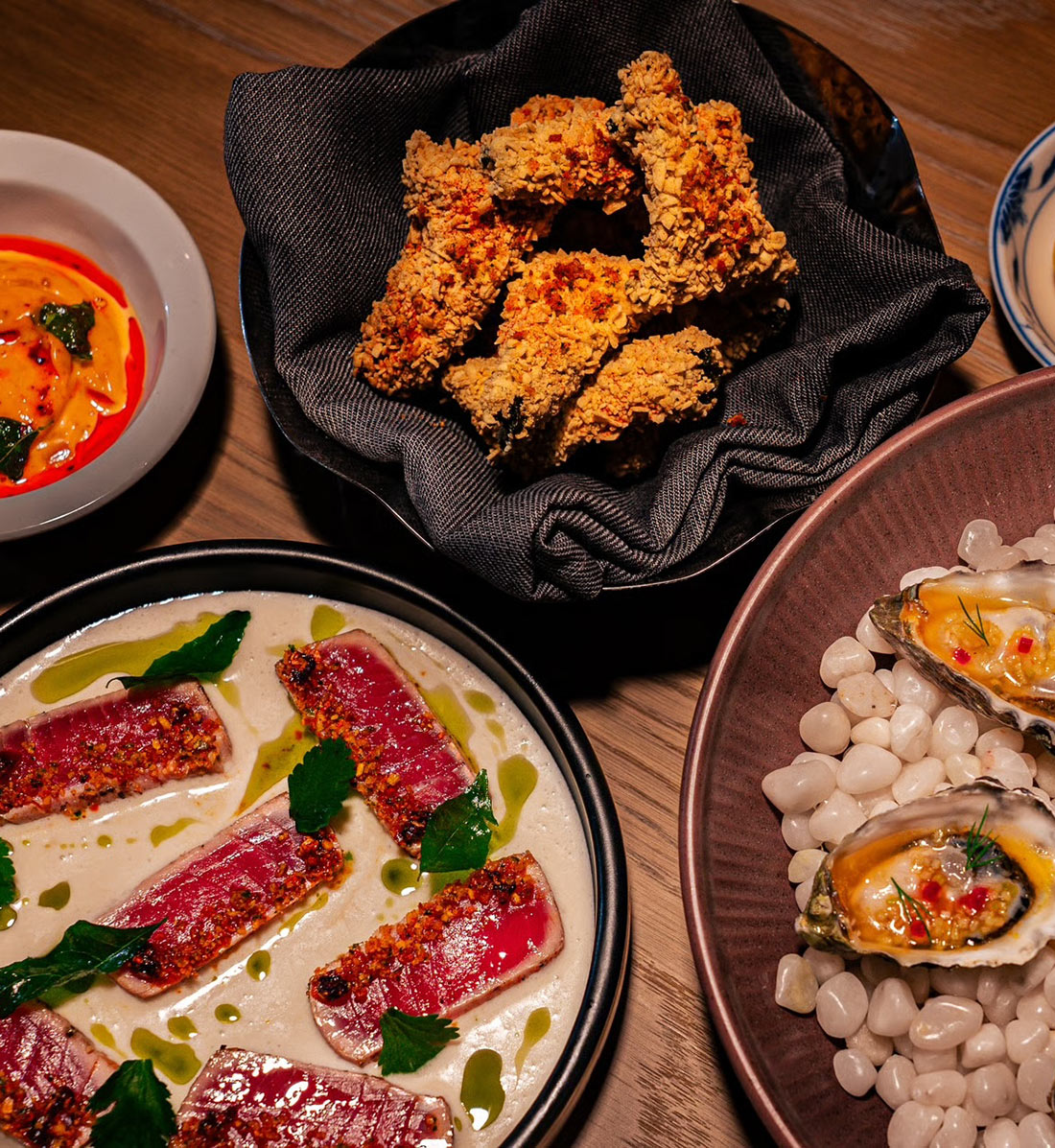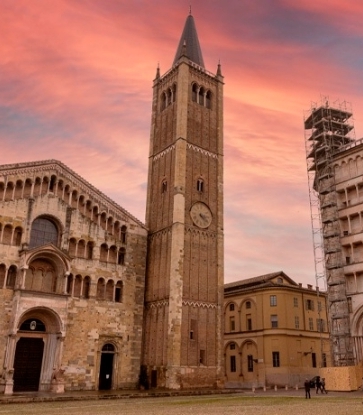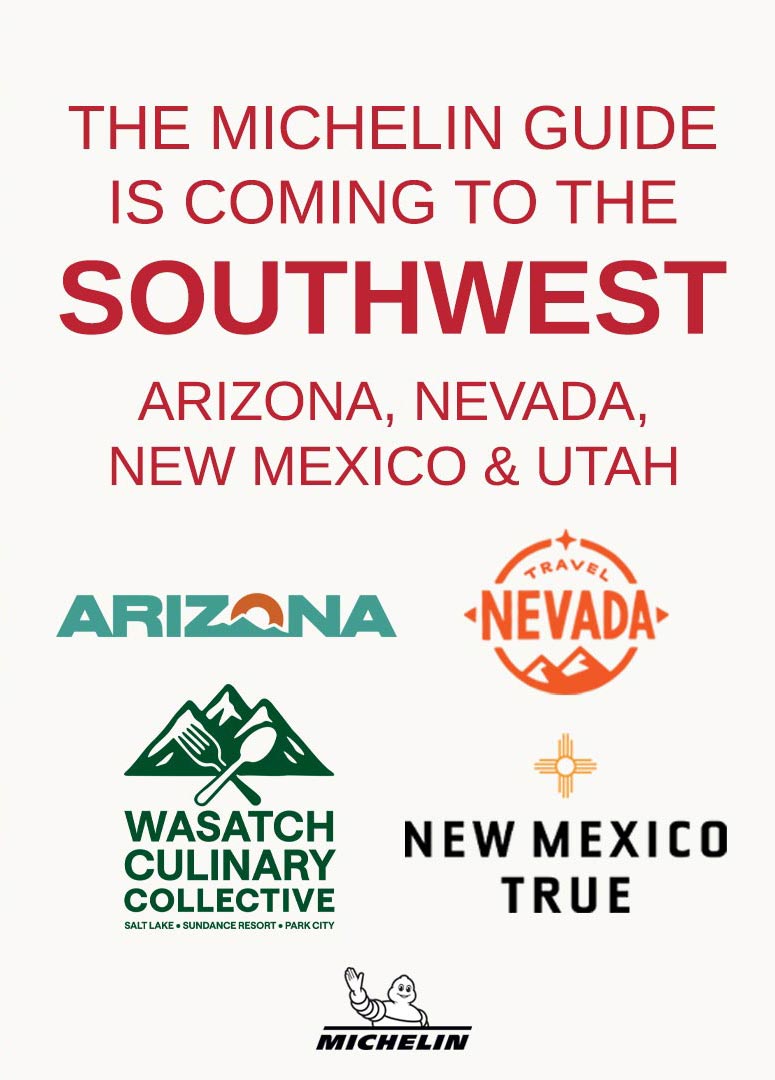Few cities carry strong, collective cultural associations as Amsterdam. For many, a visit to the Dutch capital brings to mind crowds of backpackers and British stag parties, drunkenly overtaking the city center’s coffee shops and red light district. For others the Tulip-filled city offers a softer, more romantic image of evening boat rides, Dutch masters, and biking through sunlit canals. Still, if you dig a bit beneath the surface, you’ll find a creative capital rich with far more to offer than overtly advertised—not the least of all being its world-class design and culinary scenes.
Below, one writer explores a modern hotel gem in Amsterdam's historic district replete with a Two MICHELIN Star restaurant inside and speaks with their executive chef. Book here on MICHELIN Guide Hotels.
I’ve visited Amsterdam countless times, often covering the city’s burgeoning fashion and artistic communities. However, I recently returned for the first time on my own. I wanted a quieter experience than what I’d encountered in the past—something relaxed and refined.
I chose The Dylan, a five-star boutique hotel located in a 17th century structure with three on-site restaurants, including Two MICHELIN Star Vinkeles. It turned out to be simultaneously far more indulgent (and more intimate) than I could have anticipated—in short, the perfect hideaway.

The concept of The Dylan is akin to visiting a wealthy Dutch relative. You’re meant to feel at home—an easy, laid-back, personal touch setting the tone with oodles of privacy. Located just off the bustling Keizersgracht canal in the Negen Straatjes (‘Nine Streets’) shopping district, The Dylan is reached through its original 17th century archway. Pass by the vintage bicycles and take a right into the lobby warmed by a fire year-round. An expansive (and secluded) garden sits behind the archway. Take a left to walk through the dim lit, black marble and hardwood accented OCCO Brasserie bar to take the elevator to your room. There are 40 rooms in total, with 80 employees lending a hand with quiet attention. Before my stay, the concierge reached out with several options for dinner reservations in the area upon request. He also offered bicycles, a private sail tour, and ‘high wine,’ The Dylan's answer to high tea. The approach is, simply put, thoughtful. The hotel itself is consistently quiet. You can easily forget you’re in the city center.

Beyond the personalized service and calm feel, the main focus of the property is arguably its design. Originally a 17th century theater commissioned by architect Jacob van Campen, the space lived several lives before its current iteration. The stone theater was known for Dutch plays, Shakespeare productions, and even hosted Vivaldi as its orchestra conductor in its 100th year.
Later, it became an almshouse and philanthropic bakery, and finally, in 1999, a (different) hotel. The Dylan was designed by several renowned Dutch interior designers, including Remy Meijers, Paul Linse, and Barbara de Vries of Studio Linse, the group behind the Rilksmuseum, Royal Concert Hall Amsterdam, and The Royal Opera House in London. It has an old-school, highly curated aesthetic with a modern eccentricity that feels quintessentially Dutch.
The historic meets considered modernity—the property’s earlier lives are referenced in each reinvention. The rooms themselves all have unique layouts and fit within one of four design themes, which range from the warm, butterfly-inspired Luxora, brass and wood toned Amber, the more minimal Serendipity, and the ethereal Loft.
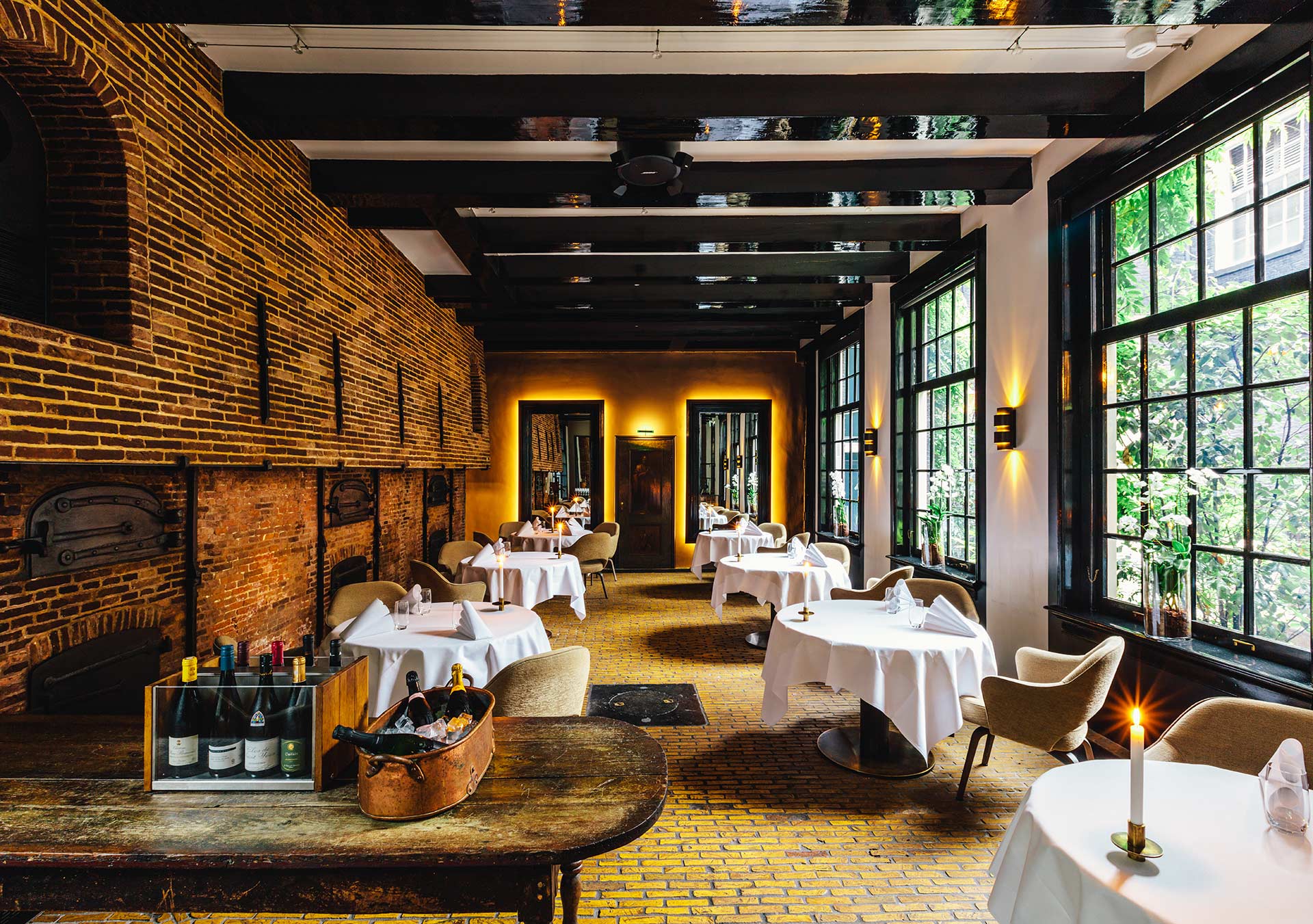
I stayed in a Loft suite spread over two floors. The first was the bedroom and living area, fit with mid-century modern pieces, clean white walls, and original, open beam ceilings. The second floor was an expansive bathroom with his-and-hers sinks, a rain shower, and a freestanding tub by the window. At one point I took a bath with a glass of the property’s signature Bernhard Eifel Riesling. It was the calmest moment I’ve had in some time.
A highlight of The Dylan is without a doubt Vinkeles, the Two MICHELIN Star restaurant helmed by Executive Chef Juergen van der Zalm. Vinkeles focuses on French cuisine with a modern, lighter touch. An obsession with exceptional quality ingredients sits at the base of what is an extraordinary—and particularly thoughtful—culinary experience.
Chef van Der Zalm sat down with me in the converted 18th century bakehouse to talk about what makes his cuisine special, the crazy chef-producer relationship, and the annual pilgrimage he makes with his fellow local chefs to the world’s best restaurants, one destination at a time.

Let’s talk about the concept and the vision for this space.
We always choose for quality. Our producers are getting really crazy because every day we’re calling, “We’re not happy, we’re not happy.” They need to take it back.
It's a bit of a marriage.
We always tell them, it doesn’t matter if you put one Euro extra, we really want to have the best and we are never going to make excuses.
Can walk me through one of the current dishes and its development, the elements that make it really special.
One of the dishes that we develop more every month is turbot. It’s made with a suquet and the suquet is a fish soup from the northern part of Spain. It's really traditional and there is a lot of seafood inside, so really deep flavors, a lot of layers. I fell in love with this sauce. Every year we go with some chef friends somewhere in the world and have four days of only lunch dinner, lunch dinner, lunch dinner, lunch dinner. A lot of food and refreshments. And this sauce was from a two Michelin star chef in Barcelona. When I came back from the trip, I started making it, but it didn’t reach the level, because it's difficult, the process. From that point, it took a few months before the sauce was really on that level. The sauce never finishes. When we have 200 grams, we start making a new one and then the old one goes in the new one.
It's really developing.
The guests can really taste the layers. I think that’s one of our strengths: sauces. The sauce makes the dish. Some sauces take two days before they are ready. So that’s the base of the dish, then with a nice glazed turbot, with garlic glaze, then with some seafood from the North Sea.
Can you tell me about your suppliers?
A lot of chefs try to stay local. I also believe that sometimes things are better somewhere else. Of course, we try to get the best from the North Sea and some local suppliers around Amsterdam. But if things are better in Japan or somewhere else…[we will also use it].
Our fish supplier comes every day. In the morning, he’ll send me a message. “Today, I have a turbot, do you want it? I have fresh langoustines.” Like that. Then, at 6 o'clock it arrives at the supplier and they drive 2 ½ hours to get here and then, if the lunch is busy, I’ll call and he’ll drive again the same day.
It’s fresh.
That’s also very important. Our seafood is from Zeeland in the south. Our lambs are coming from Texel, the island in the north. We always try to find special products. Like the lamb from Texel tastes a little bit salty because the grass is salty from the sea. And you taste that also in the meat. We have some suppliers who take products two times a week out of Paris. We have a supplier in Spain. One supplier who brings things from Japan every week.
Tell us about the trips you take with the group of chefs.
We started as students. From that point, we started becoming friends and we made a savings account. Every month, we deposited 25 euros.
It’s doable.
After one year, we would see how much was in the account and go for dinner. Now, we have been doing it for five years. The last restaurant was in Barcelona. We went to [Two MICHELIN Star] Disfrutar. We always get really inspired by those kinds of chefs.
What’s the last thing that you ate that had an impact?
In March, I went to [Two MICHELIN Star and Green Star] Alchemist in Copenhagen and that was really new for me. Of course, they work with really nice products, but there are also a lot of impressions outside of the food. It’s theater style. You’re sitting in a dome and you have this movie around you from the ocean. All the dishes on the menu have a message. So they have a chicken leg and the dome goes with chickens in cages.
You have to interact with it in a different way than you might normally.
There was a dish made of plastic with the ocean and a lot of plastic in the ocean.
Climate change and sustainability themes.
And it's also the future to think a little bit more…
We’re going to have to.
That was really impressive. Now we’re planning the next trip in October. We’re still thinking: should we go to Paris or Madrid?
How would you characterize your own style?
Always going for the best products, but the base is really classic French. All my teachers were classic French chefs. And for my stints in different kinds of international influence, a little bit lighter. Classic French is a lot of cream, butter… to make it a little bit lighter in flavors, more acidity, and combine it.
Can you tell us about the food scene in Amsterdam and the Dutch chef community?
There are really great chefs in Amsterdam. The chef community is really close. We’re all friends. We don’t see each other as enemies. Sometimes a chef runs out of something and they call us, hey, can I borrow it? And we send a taxi. We help each other. I think we have a really high level of cuisine in Amsterdam and it's getting only better.
Do you have some other spots you like to eat?
Yes. There are a lot of MICHELIN starred chefs who opened brasserie kind of restaurants.
Sometimes it's nice to be relaxed.
We’re also humans. We also like to have a nice steak with fries [laughs]. But there are really good chefs. Sidney Schutte is a big example for me.
Where do you go for inspiration?
I think with every chef it is a little bit the same. Most of the inspiration comes from the suppliers. I also need them to inspire me as the season is changing. Before, we had nice lambs from Texel in May. Now as the summer is coming later so the season changed also a little bit. They really need to inspire me with the products at this moment. Then, of course, eating a lot out in the city. Traveling a lot. Trying new products. One hour ago I had a meeting with a supplier from France. He made really nice juices. And that’s going on every day. We are standing where we are now because of our suppliers. Of course, we put a lot of pressure on them, but they also need to get the credit. They need to be crazy enough to drive here at midnight or maybe on their free days. Without them, we wouldn’t be where we are now.
Is there anything you would like to share that I haven’t asked?
We keep on going to search for the best around the world. I think not a lot of restaurants can do that.
What a dream.
It really is a dream.








